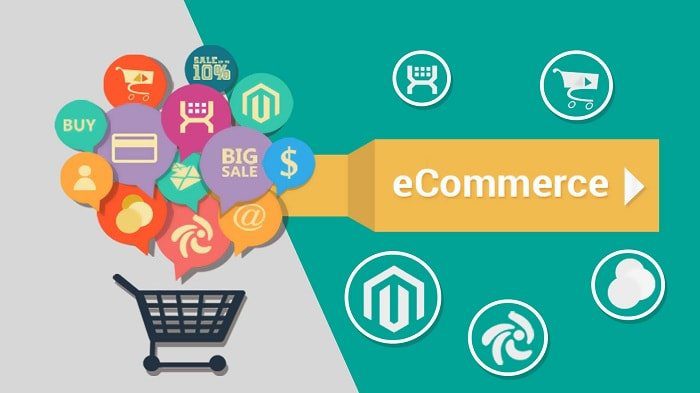E-commerce has already completely changed the way in which consumers and clients purchase goods and services. While your customer may have once expected to walk into your brick and mortar store, they now expect to purchase that same basket of shopping with the click of a button from your website.
In fact, a report about e-commerce published by analytics firm Statista revealed that global retail e-commerce is expected to reach $4.88 trillion by 2021. This is a massive increase over the $1.336 trillion that the market was worth in 2014 and, in fact, it’s still a big jump over the $2.842 trillion expected to be spent on e-commerce in 2018.
You’ve already worked to secure your business’ future by throwing your hat into the e-commerce ring. But, as the e-commerce landscape changes and shifts in 2019, you will need to continue to appeal to customers and be aware of the way(s) that they are spending their money and what they will expect from you as a vendor.
Customers Are Getting Savvier About Buying Online
One thing you should be prepared for in 2019 is that customer mindsets are completely changing. Because so many people are shopping online, it means that they are well used to the tips and tricks employed by e-commerce providers. With increased competition in the e-commerce space, there are plenty of places that they can go for better deals too, and so they have come to actively expect these benefits.
You can offer benefits without making a loss, though. A tried and tested method is to offer free shipping by factoring the cost of shipping into the price of the goods. You could also follow in the footsteps of online casino bonuses; casinos offer players welcome bonuses such as free spins and game credits.
This helps casinos to foster player loyalty and allow them to try before they actually spend money, perhaps encouraging them to spend more if they were otherwise on the fence about playing. In this vein, you could offer a free voucher or automatic money off the first purchase. Or, if you’re in the service industry, you could just make use of free trials so that users will be fully convinced of the quality of your platform when they do decide to spend money.
Customers Aren’t Just Buying Physical Goods
In this digital age, it’s not just the way that we buy things which has changed; it has also affected what we’re buying. If customers are able to purchase goods online then their devices will also be capable of accessing digital content. And, if they can access digital content, it means that you can sell them digital content.
Easy Digital Downloads lists a variety of popular digital content that you could potentially sell to your audience. If you’re in the entertainment sector, then streamable or downloadable videos (including TV shows, movies and web series) and music will make sense. But any company that produces something can adapt to digital.
For example, if your company offers professional photography services, you could sell downloadable stock image packs. If you’re an expert in your field (and this can be any field at all), then you could sell a course that teaches clients and customers, or even ebooks including useful information. For customers that can’t afford or don’t want to buy physical goods from you, digital content allows you to still sell in a way that works for them.
Customers Are Looking for Trust Signals
Another factor that shoppers consider when spending money online is whether or not they can trust you. Establishing trust with a brick and mortar store requires considerably less effort – you show up, you act in a polite and professional manner and do your best to address shopper concerns and questions.
E-commerce mostly takes these aspects away, but you can still establish trust. One way to do this is to use social proof, which typically comes in the form of user reviews. Nothing sells a product quite like another customer singing its praises. Did it arrive in the condition that they expect? Did it work as described in the product listing? This is information that a happy customer could spell out in the review. It also lets a prospective buyer know that you sell quality products, recognising your trustworthiness without you having to yell it at them.
Voice Commerce is on the Rise
In 2018, we heard repeatedly that businesses need to plan for mobile e-commerce. With billions of people having mobile devices, it made sense that you would need to consider how people are using those devices to shop online. And while there’s no reason to stop making mobile e-commerce work, in 2019 you’ll also need to prepare for the rise of voice commerce.
Voice commerce is just a form of shopping in which you use your voice to navigate to the product or listing that you’re looking to spend money on. It just replaces keyboard and mouse (or keyboard and touch inputs) as a way of getting around. It’s expected to increase in popularity because it’s so easy. If you don’t know how to spell something or you’re trying to get information in a hurry with your hands full, you’ll want to use your voice to find something. 50% of all searches are expected to be voice searched by 2020, and Gartner Group expects early adopters of voice commerce to see a 30% increase in e-commerce revenue by 2021.
User-Generated Content
By 2019, there are expected to be 2.77 billion social media users. Twitter, Instagram, and Facebook aren’t just platforms for sharing flattering selfies of yourself or for taking snaps of your food, they’re also great for enthusing about a new product that you’ve purchased.
Consider this user-generated content as a form of social proof – and as a trust signal. It’s seen as a very good sign when a customer is willing to pose, strutting their stuff in a new piece of clothing they’ve just purchased from your store, or if they talk about what a great time they had using one of your products.
Not only is this free advertising for your business and your product, as their followers will take interest in your brand, but you can also use it to get existing fans of yours to buy. It gives them an idea of how they could use that product and lets them imagine having that product in their lives.
Why People Like Subscription Services
Question: what is better than a single sale from a single customer? Answer: recurring sales from that same customer. It’s this simple question and answer that has led to the almost 4,000 subscription boxes that people can sign up to around the world. They can sign up to receive everything from beauty products, home decor items, art and craft supplies, and much more. If a product exists then there’s a good chance that there is a subscription box for it.
If you sell a physical good then you’ll want to consider offering a subscription. For your customers who regularly buy from you, a subscription platform would be of massive convenience to them and it would prevent them from being swayed by other offers from competing retailers. It also allows you to bring in recurring revenue, and you’ll increase your loyalty with that customer too, potentially allowing you to up-sell them on other products.
E-commerce is tricky to follow. Online shopping habits move so quickly, and you need to act fast in order to hold onto your section of the market or even make gains. But by waking up to these trends and working to ready your business for them, you’ll be able to find success in e-commerce in 2019.






















